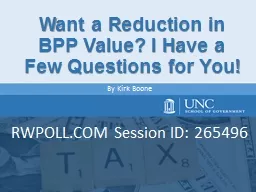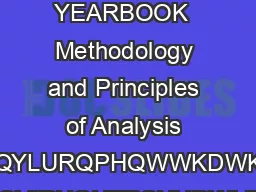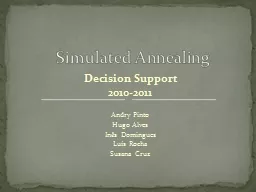PPT-Want a Reduction in BPP Value? I Have a Few Questions for You!
Author : thesoysi | Published Date : 2020-08-28
By Kirk Boone RWPOLLCOM Session ID 265496 Which description fits you best I am an assessor I am with a private company I am a BPP appraiser I am a Real P appraiser
Presentation Embed Code
Download Presentation
Download Presentation The PPT/PDF document "Want a Reduction in BPP Value? I Have a ..." is the property of its rightful owner. Permission is granted to download and print the materials on this website for personal, non-commercial use only, and to display it on your personal computer provided you do not modify the materials and that you retain all copyright notices contained in the materials. By downloading content from our website, you accept the terms of this agreement.
Want a Reduction in BPP Value? I Have a Few Questions for You!: Transcript
Download Rules Of Document
"Want a Reduction in BPP Value? I Have a Few Questions for You!"The content belongs to its owner. You may download and print it for personal use, without modification, and keep all copyright notices. By downloading, you agree to these terms.
Related Documents














